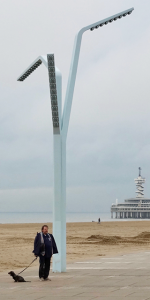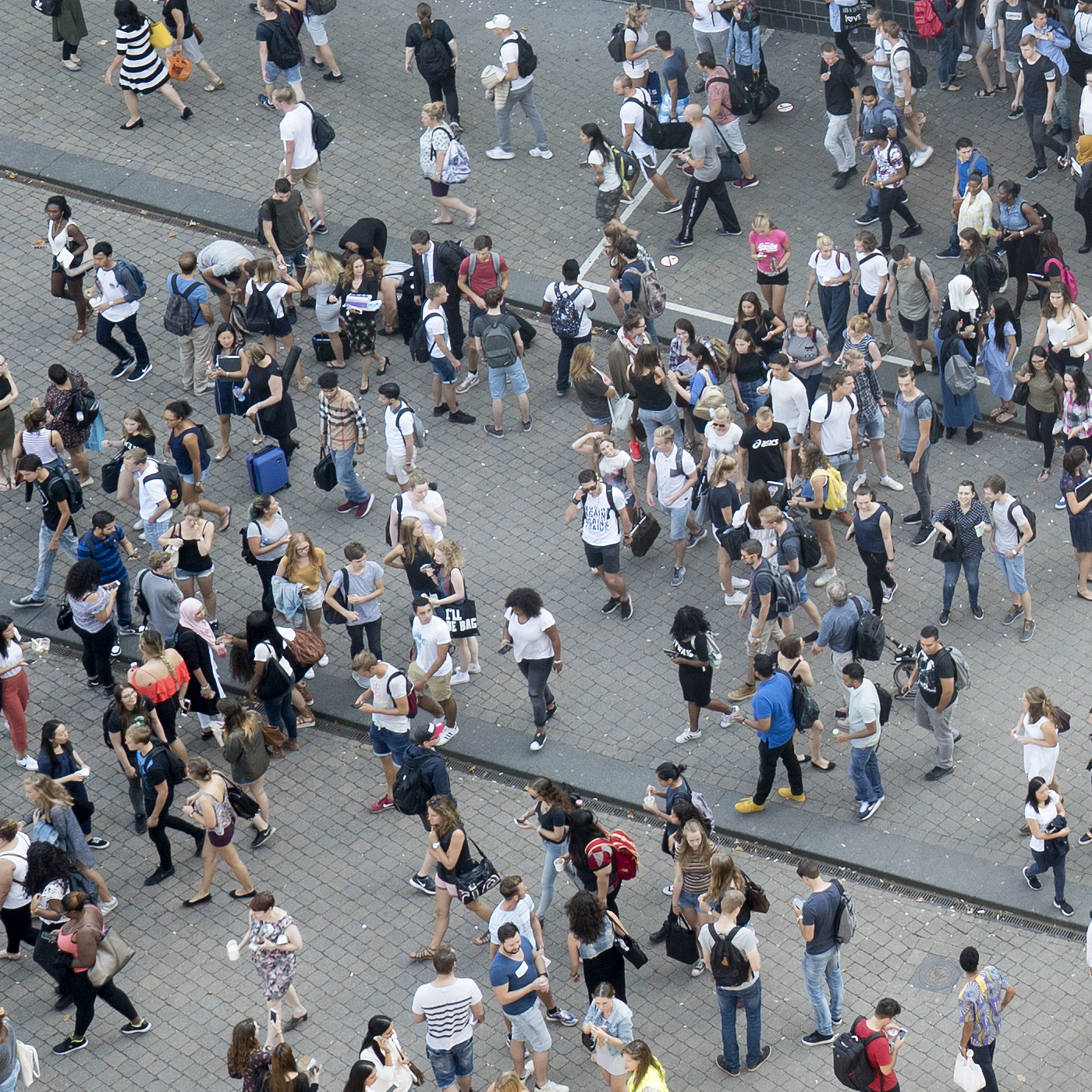 Artificial Intelligence is not a hype. After a slow start in the 20th century, we now see more and more applications of AI, particularly indoors (robot vacuum cleaners, smart installations for climate control) and our personal space (bio-sensors). In the outdoor space, AI is seen much less often, but the technical infrastructure is developing rapidly and new possibilities emerge UrbanUX investigated which innovations can be realised with AI in the public outdoor environment.
Artificial Intelligence is not a hype. After a slow start in the 20th century, we now see more and more applications of AI, particularly indoors (robot vacuum cleaners, smart installations for climate control) and our personal space (bio-sensors). In the outdoor space, AI is seen much less often, but the technical infrastructure is developing rapidly and new possibilities emerge UrbanUX investigated which innovations can be realised with AI in the public outdoor environment.
In this research project, UrbanUX collaborated with Smart The Hague, Jungle Works, Wunderpeople and Haagse Makers. The project was made possible with a KIEM-subsidy from Regieorgaan SIA. The project ran from Nov. 1, 2017 until Oct. 31, 2018. It delivered many insights and two prototypes. In Dutch, you can read all about it the final report of the project.
Continue reading “Artificial Intelligence in the Public Space”
 In the Mariahoeve neighbourhood of The Hague, a park is being revamped. The neighbourhood manager, as representative of the municipality, invited inhabitants to design three variants for the park, with the aid of specialists and using 3D modelling tools. The three designs were then presented to all neighbourhood inhabitants, using Virtual Reality, who voted for their preferred design. Three forms of VR were utilised and evaluated in this research project.
In the Mariahoeve neighbourhood of The Hague, a park is being revamped. The neighbourhood manager, as representative of the municipality, invited inhabitants to design three variants for the park, with the aid of specialists and using 3D modelling tools. The three designs were then presented to all neighbourhood inhabitants, using Virtual Reality, who voted for their preferred design. Three forms of VR were utilised and evaluated in this research project. The project has two objectives: consulting the municipality in communicating the design variants to the public; and investigating the effectiveness and validity of the different forms of VR and their effect on the engagement of inhabitants in the decision-making process.
The project has two objectives: consulting the municipality in communicating the design variants to the public; and investigating the effectiveness and validity of the different forms of VR and their effect on the engagement of inhabitants in the decision-making process. Every day, we communicate with means that bridge the limitations of time and place, such as phones, email, chat, social media. This project explores concepts for location-bound asynchronous communication: how can we leave messages for other people in particular places? What applications of such technology could be meaningful? This project has led to very inspiring and strong concepts for new forms of encounters and social activities.
Every day, we communicate with means that bridge the limitations of time and place, such as phones, email, chat, social media. This project explores concepts for location-bound asynchronous communication: how can we leave messages for other people in particular places? What applications of such technology could be meaningful? This project has led to very inspiring and strong concepts for new forms of encounters and social activities. The app can help citizens to express their wishes and literally map them, to get into discussions about such issues, to generate ideas together and take action collectively. The professionals in the neighbourhood use the app to gain insight in what’s at stake and to communicate with inhabitants. This project has iteratively generated a number of solutions for the Citizen-Pro app.
The app can help citizens to express their wishes and literally map them, to get into discussions about such issues, to generate ideas together and take action collectively. The professionals in the neighbourhood use the app to gain insight in what’s at stake and to communicate with inhabitants. This project has iteratively generated a number of solutions for the Citizen-Pro app. Most car drivers use a navigation system that can help find the best route and often also a closed parking garage. These systems, however, do not help finding a parking spot in the street. In this project, we investigate and design an app that makes this possible.
Most car drivers use a navigation system that can help find the best route and often also a closed parking garage. These systems, however, do not help finding a parking spot in the street. In this project, we investigate and design an app that makes this possible. In The Hague, the crossing of Spui and De Grote Marktstraat/Kalvermarkt, is busy and complex because of the many different types of transport and because there is nog marking, no signage on the road or on traffic signs. In this scarcely regulated area, people use human communication to safely find their way through the seeming chaos, with any apparent problems. But what if soon autonomous vehicles will appear? Buses and taxis without driver? How will we communicate with them, if there’s no driver to look into the eyes?
In The Hague, the crossing of Spui and De Grote Marktstraat/Kalvermarkt, is busy and complex because of the many different types of transport and because there is nog marking, no signage on the road or on traffic signs. In this scarcely regulated area, people use human communication to safely find their way through the seeming chaos, with any apparent problems. But what if soon autonomous vehicles will appear? Buses and taxis without driver? How will we communicate with them, if there’s no driver to look into the eyes? With the introduction of email, sending messages and letters has nog only become easier, but also faster. In general, we experience this as an optimisation and improvement of the physical letters we used to send. yet, sending mail on paper, in an envelope, certainly had its charm that we rarely experience any longer. This project is a search for new forms of communication that function with modern technology but retain the type of charm that hand-written paper post possessed. It appears to be difficult to let go of existing metaphors and known forms of interaction.
With the introduction of email, sending messages and letters has nog only become easier, but also faster. In general, we experience this as an optimisation and improvement of the physical letters we used to send. yet, sending mail on paper, in an envelope, certainly had its charm that we rarely experience any longer. This project is a search for new forms of communication that function with modern technology but retain the type of charm that hand-written paper post possessed. It appears to be difficult to let go of existing metaphors and known forms of interaction.

